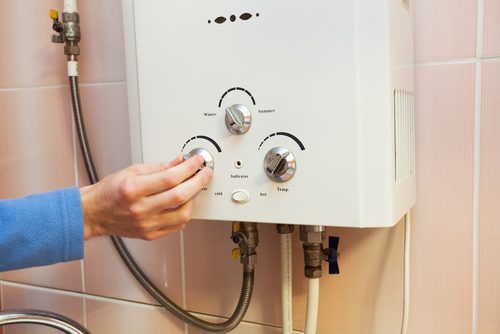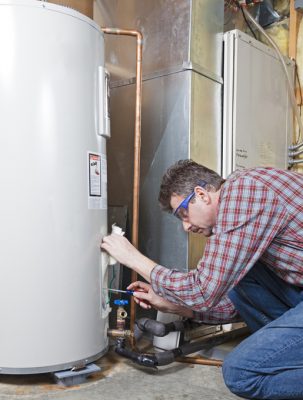Caring for Your Home's Hot Water System: Key TipsEffective Techniques for Maintaining Your Home's Hot Water System
Caring for Your Home's Hot Water System: Key TipsEffective Techniques for Maintaining Your Home's Hot Water System
Blog Article
They are making several great pointers regarding What Kind of Maintenance Do Water Heaters Need? overall in this great article on the next paragraphs.

Warm water is necessary for everyday comfort, whether it's for a revitalizing shower or cleaning meals. To ensure your warm water system runs effectively and lasts much longer, normal maintenance is crucial. This write-up supplies useful tips and understandings on exactly how to maintain your home's warm water system to avoid disturbances and expensive repair work.
Intro
Maintaining your home's warm water system may seem complicated, but with a few straightforward steps, you can guarantee it runs smoothly for several years to find. This guide covers everything from comprehending your hot water system to DIY upkeep suggestions and recognizing when to contact specialist assistance.
Relevance of Maintaining Your Hot Water System
Routine maintenance not only prolongs the lifespan of your hot water system yet likewise guarantees it operates successfully. Overlooking upkeep can lead to reduced performance, higher power costs, and even early failure of the system.
Indications Your Warm Water System Needs Upkeep
Knowing when your hot water system requires attention can prevent major problems. Keep an eye out for indicators such as inconsistent water temperature level, unusual sounds from the heating unit, or rusty water.
Comprehending Your Hot Water System
Before diving right into upkeep tasks, it's valuable to comprehend the basic components of your hot water system. Usually, this consists of the hot water heater itself, pipes, anode rods, and temperature controls.
Monthly Maintenance Tasks
Routine monthly checks can help catch small concerns before they escalate.
Purging the Water Heater
Purging your hot water heater removes sediment buildup, enhancing performance and prolonging its life.
Checking and Changing Anode Rods
Anode poles prevent corrosion inside the storage tank. Evaluating and changing them when worn out is vital.
Checking and Readjusting Temperature Level Setups
Readjusting the temperature settings guarantees ideal efficiency and safety and security.
Do It Yourself Tips for Maintenance
You can perform a number of upkeep jobs on your own to maintain your warm water system in top problem.
Looking for Leakages
Routinely examine pipelines and links for leakages, as these can cause water damage and higher costs.
Examining Stress Alleviation Valves
Testing the pressure relief valve ensures it operates correctly and stops too much pressure accumulation.
Shielding Pipelines
Insulating hot water pipes minimizes warmth loss and can conserve power.
When to Call a Professional
While DIY upkeep is beneficial, some concerns call for specialist experience.
Complicated Issues Requiring Expert Assistance
Instances consist of significant leakages, electrical troubles, or if your water heater is consistently underperforming.
Routine Expert Maintenance Advantages
Expert upkeep can include extensive inspections, tune-ups, and guaranteeing compliance with safety and security standards.
Final thought
Normal upkeep of your home's warm water system is crucial for performance, durability, and expense financial savings. By following these tips and recognizing when to seek expert assistance, you can make sure a reliable supply of warm water without unforeseen disruptions.
How to Maintain an Instant Hot Water Heater
Before tinkering with your hot water heater, make sure that it’s not powered on. You also have to turn off the main circuit breaker and shut off the main gas line to prevent accidents. Also turn off the water valves connected to your unit to prevent water from flowing into and out of the appliance. 2. When you’re done, you have to detach the purge valves’ caps. These look like the letter “T” and are situated on either side of the water valves. Doing so will release any pressure that has accumulated inside the valves while at the same time avoid hot water from shooting out and burning your skin. 3. When the purge valves’ caps are removed, you have to connect your hosing lines to the valves. Your unit should have come with three hoses but if it didn’t, you can purchase these things from any hardware or home repair shops. You can also get them from retail stores that sell water heating systems. Read the user’s manual and follow it to complete this task properly. When the hosing lines are connected, open the purge port’s valves. 4. You should never use harsh chemical cleaners or solutions when cleaning your unit. Make use of white vinegar instead. It should be undiluted and you’ll probably use about 2 gallons. 5. Now flush your water heater. This task should probably take about 40 minutes. We can’t give you specific directions for this because the procedure is carried out depending on the type, model and brand of your heater. With that being said, refer to the user’s manual. 6. When you’re done draining the unit, you have to turn off the purge port valves again. Remove the hosing lines that you earlier installed on each of the water valves. Put the valve caps (purge port) back in their respective places and be very careful so as not to damage the rubber discs that are found inside these caps. 7. Now that everything’s back in place, check your user’s manual again to find out how to reactivate your water heating system. 8. Once it is working, turn one of your hot water faucets on just to let air pass through the heater’s water supply pipes. Leave the tap on until water flows smoothly out of it. https://www.orrplumbing.com/blog/2014/september/how-to-maintain-an-instant-hot-water-heater/

Do you like reading up on Tips on Maintaining a Water Heater? Create a remark further down. We'd be glad to hear your opinions about this post. Hoping to see you back again before long. Sharing is good. Helping people is fun. We value your readership.
Click Here Report this page